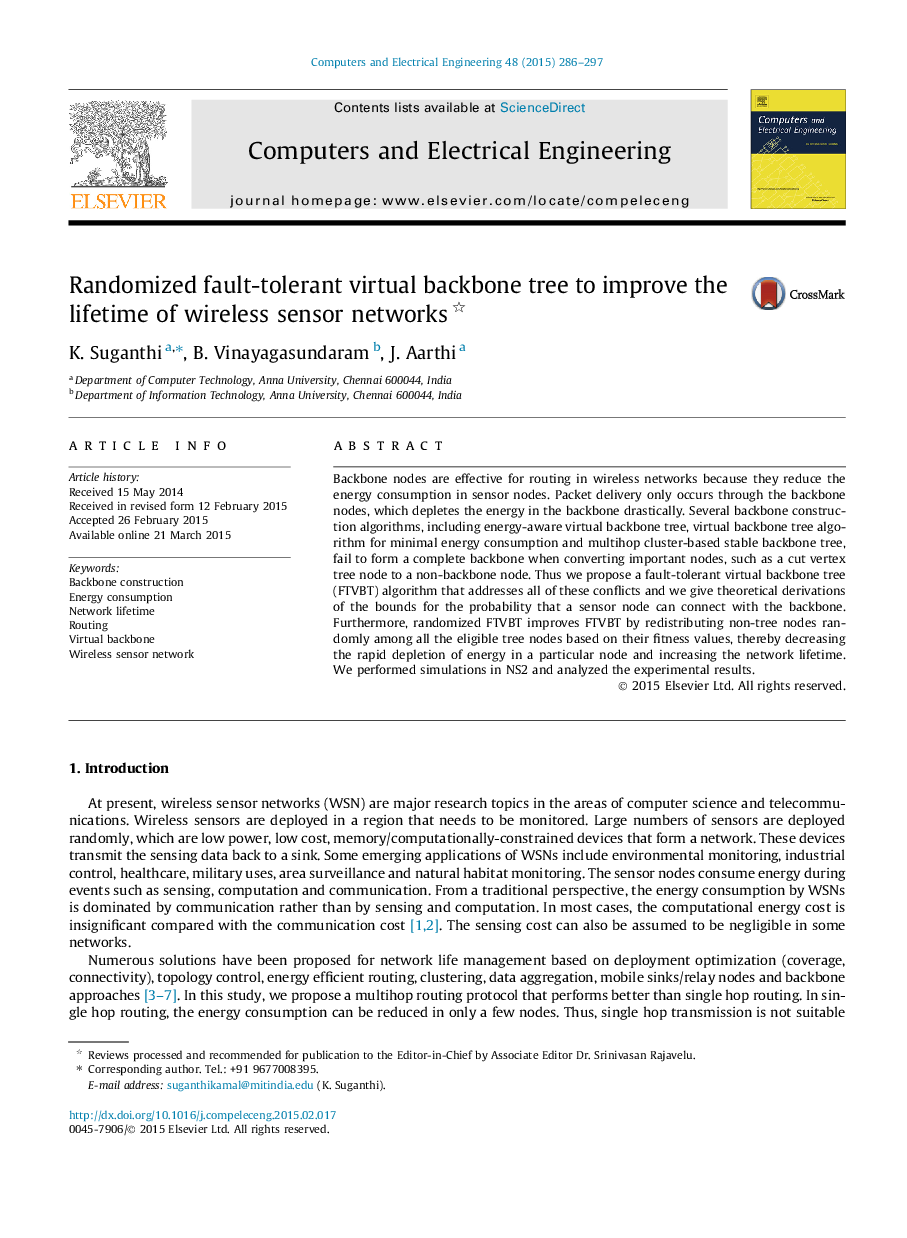| Article ID | Journal | Published Year | Pages | File Type |
|---|---|---|---|---|
| 455167 | Computers & Electrical Engineering | 2015 | 12 Pages |
•Need of energy efficient backbone routing for WSNs.•FTVBT (virtual backbone tree construction algorithm) proposed to minimize energy consumption.•Identifies hotspots, distributes dependents across tree nodes and the distribution is also bounded.•Randomized FTVBT elects tree nodes based on a weight function and increases network lifetime.
Backbone nodes are effective for routing in wireless networks because they reduce the energy consumption in sensor nodes. Packet delivery only occurs through the backbone nodes, which depletes the energy in the backbone drastically. Several backbone construction algorithms, including energy-aware virtual backbone tree, virtual backbone tree algorithm for minimal energy consumption and multihop cluster-based stable backbone tree, fail to form a complete backbone when converting important nodes, such as a cut vertex tree node to a non-backbone node. Thus we propose a fault-tolerant virtual backbone tree (FTVBT) algorithm that addresses all of these conflicts and we give theoretical derivations of the bounds for the probability that a sensor node can connect with the backbone. Furthermore, randomized FTVBT improves FTVBT by redistributing non-tree nodes randomly among all the eligible tree nodes based on their fitness values, thereby decreasing the rapid depletion of energy in a particular node and increasing the network lifetime. We performed simulations in NS2 and analyzed the experimental results.
Graphical abstractFigure optionsDownload full-size imageDownload as PowerPoint slide
